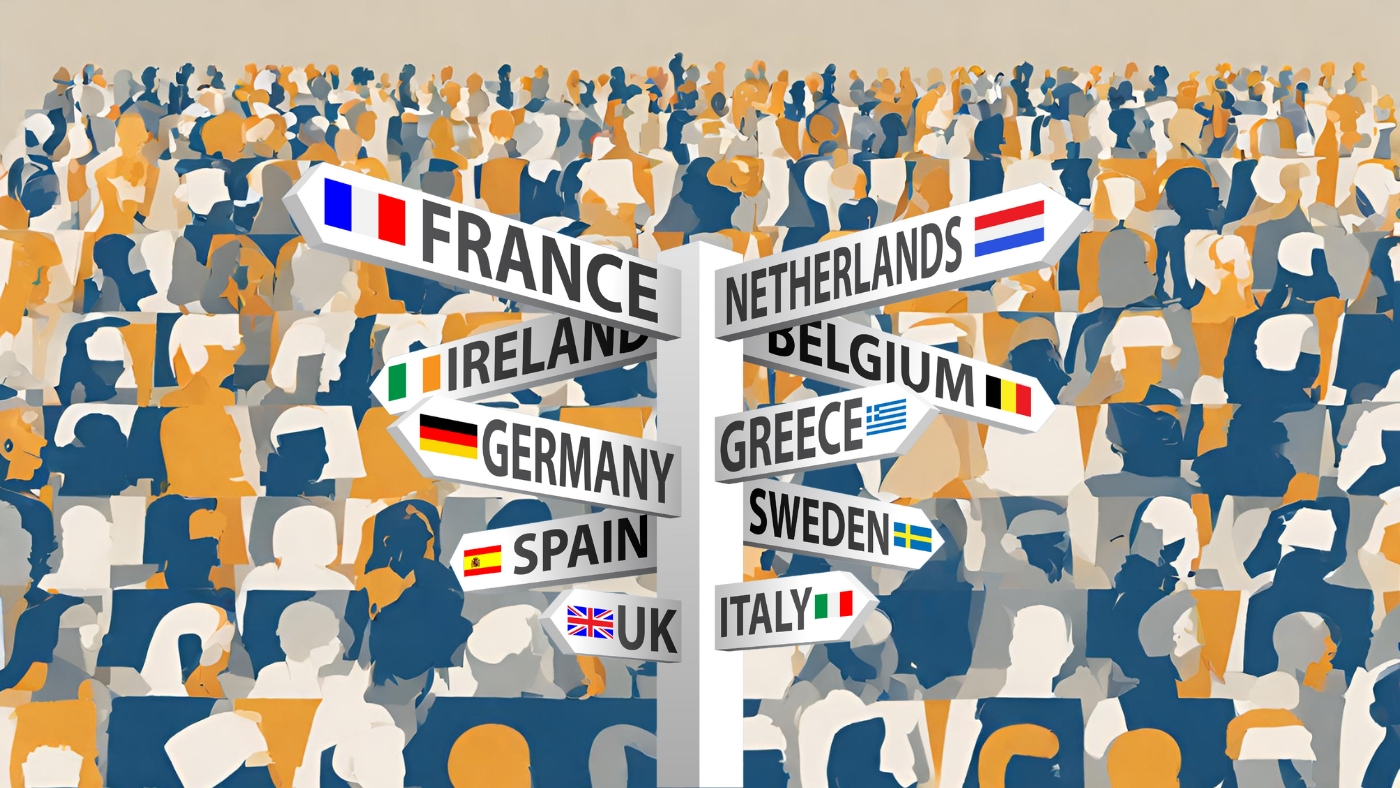Assembly Vice President Cheikh Niang of Senegal, holding the gavel in the General Assembly Hall and deputizing for President Dennis Francis, read out a statement on his behalf.
General Assembly Vice President Cheikh Niang chairs the Emergency Special Session meets on the situation in the Middle East, including the Palestinian question.
Mr. Francis said he welcomed the adoption of Security Council resolution 2720 late last month, which called for safe, unhindered and expanded humanitarian access and conditions for a sustainable cessation of hostilities.
He urged all warring parties in Gaza to “fully implement” the Council resolution as well as the Assembly resolution of 12 December calling for a ceasefire, arising from the Assembly’s reconvened Emergency Special Session.
On protecting civilians, Mr. Francis urged all Member States “to keep this shared goal to the forefront during today’s debate.”
Debate triggered by Assembly resolution
The General Assembly adopted a resolution designed to foster greater cooperation with the Security Council, in the wake of Russia’s full-scale invasion of Ukraine in early 2022.
That resolution states that anytime the veto is used in the Security Council, it automatically triggers a meeting and debate in the General Assembly, to scrutinize and discuss the move.
The veto is a special voting power held by the permanent member States on the Council, whereby if any one of the five — China, France, Russia, the UK and the US — casts a negative vote, the resolution or decision automatically fails.
The Assembly resolution which introduced this extra scrutiny calls for the Assembly President to convene a formal debate within 10 working days, so that the 193 members of the wider body can have their say.
The intention behind it is to give UN Member States the chance to make recommendations, which could include the use of armed force, to maintain or restore peace and security on the ground.
As with all Assembly resolutions they carry moral and political weight but are non-binding and do not generally carry the force of international law, unlike some measures agreed by the Security Council.
Tuesday’s meeting came on the heels of the US vetoing a Russian amendment prior to the successful passing of last month’s Council resolution on Gaza.
Watch full coverage of Tuesday morning’s session in New York, below:
US committed to ‘bringing all of the hostages home’
The US Deputy Permanent Representative, Robert Wood, said the US welcomed the adoption of December’s Security Council resolution on 22 December.
Deputy Permanent Representative Robert A. Wood of the United States addresses the UN General Assembly meeting on the situation in the Middle East, including the Palestinian question.
Although the US abstained, he said the US had worked closely with other key States “in good faith” to forge a strong resolution. “This work supports the direct diplomacy the US is engaged in to get more humanitarian aid into Gaza and to help get hostages out of Gaza”, he said.
Without naming Russia – whose amendment provoked the US veto in question – he said one Member State persisted in putting forward ideas which are “disconnected from the situation on the ground”.
He said it was “also deeply troubling” that many States seemed to have stopped talking about the plight of hostages still being held in Gaza by Palestinian militants.
The US is committed to bringing them all home he said and remains “engaged in efforts to secure another pause” in the fighting. Also lacking, he added, are demands that Hamas lay down its arms and surrender.
“It would be good if there was a strong international voice pressing Hamas’s leaders to do what is necessary to end the conflict that they set in motion on 7 October”, he said.
Palestinians enduring a ‘war of atrocities’
Permanent Observer of the State of Palestine, Riyad Mansour, said that he was standing before the Assembly “representing a people being slaughtered, with families killed in their entirety, men and women shot in the streets, thousands abducted, tortured and humiliated, children killed, amputated, orphaned – scarred for life.”
Riyad Mansour, Permanent Observer of the State of Palestine to the United Nations, addresses the UN General Assembly meeting on the situation in the Middle East, including the Palestinian question.
He said “no people” should have to endure such violence and it must stop.
No one can understand that the Security Council is still being prevented from calling for an immediate humanitarian ceasefire, he added, while 153 States in the General Assembly have called for just that, along with the UN Secretary-General.
Israel’s assault is without precedent in modern history he said, “a war of atrocities”.
“How can you reconcile opposing the atrocities and vetoing a call to end the war that is leading to their commission?”, he asked.
The State of Palestine has long supported a proposal from France and Mexico “for the suspension of the veto in the case of mass atrocities, when crimes of genocide, crimes against humanity and war crimes on a large scale are committed.”
He said the assault on Palestinians in Gaza, “demonstrates how vital this proposal is. Supporting an immediate ceasefire is the only moral, legitimate, and responsible position.”
During these last 90 days, 11 Palestinians have been killed every hour, including seven women and children, he told the Assembly.
“This is not about Israeli security; this is about Palestine’s destruction. The interests and objectives of this extremist Israeli government are clear and incompatible with the interests and objectives of any country that supports international law and peace”, Mr. Mansour said.
Security will never come through the death, destruction and dehumanization of Palestinians, he added.
Palestine is here to stay, he declared: “Don’t call for peace and spread fire. If you want peace, start with a ceasefire. Now.”
No morals, ‘only bias and hypocrisy’: Israel
Israel’s Ambassador to the UN, Gilad Erdan, wondered how, with 136 people still held hostage, including a baby about to mark his first birthday, any delegations could be calling for a ceasefire.
“How morally bankrupt has this body become?”, he said. Why are there no deafening calls inside the hall to bring him home, and “why are you not holding Hamas accountable for the most heinous war crimes?”
Ambassador Gilad Erdan of Israel addresses the UN General Assembly meeting on the situation in the Middle East, including the Palestinian question.
He said that “despite the UN’s moral rot”, the citizens of Israel are resilient, with faith, hope and unbreakable resolve to defend themselves.
He said the UN had become “an accomplice to terrorists” and now lacked the justification to exist.
Rather than focusing on bringing hostages home and their suffering, the UN “has been obsessed only with the well-being of people in Gaza”, those who put Hamas in power and supported the group’s atrocities, he added.
“You ignore all Israeli victims”, he said.
He asked how the Convention on the Prevention of Genocide be weaponized against the Jewish State, when the only thing Hamas wants, is to repeat the Holocaust.
“There are no morals here, only bias and hypocrisy”, he said. By calling for a ceasefire is giving the green light to Hamas to continue its reign of terror.
He said that by calling for a ceasefire, the Assembly is sending a clear message to terrorists across the world. “The UN is signalling to terrorists that rape as a weapon of war, is fine”, he added.
US responsible for ‘toothless’ resolutions: Russia
Deputy Permanent Representative for Russia, Anna Evstigneeva, said that Washington had been guilty of playing an “unscrupulous game” to protect Israel’s actions in Gaza, when it used the veto in the Security Council on 22 December.
Anna Evstigneeva, Deputy Permanent Representative of the Russian Federation, addresses the UN General Assembly meeting on the situation in the Middle East, including the Palestinian question.
She said that using blackmail and arm-twisting, the US had given Israel a license to carry on killing Palestinians “blessing the ongoing extermination of the Gazans”, which is why they put forward their amendment.
She said the real aim of the US veto was to push through its aim of giving Israel free rein, and “deliberately undermine multilateral efforts under the auspices of the UN to serve its own geopolitical interests in the Middle East.”
Ms. Evstigneeva said that “the sad result” of this is that over the past three months of escalation in Gaza, the Council has only been able to adopt “toothless” resolutions.
Russia abstained on both documents, rather than voting against them, solely based on requests from the Palestinian and Arab representatives.
A clear demand from the Security Council for a full ceasefire remains an imperative, she said.
Without it, implementing the Council’s decisions in Gaza “is just not possible”.
She said the spiral of continuing violence is “clearly catastrophic” and will continue until the root causes of the conflict are properly addressed, through a two-State solution.
Under current conditions, our shared goal is to assist the parties in establishing the negotiation process. A “collective diplomatic mechanism” is required and one of the most pressing tasks is the restoration of Palestinian unity, she added.















